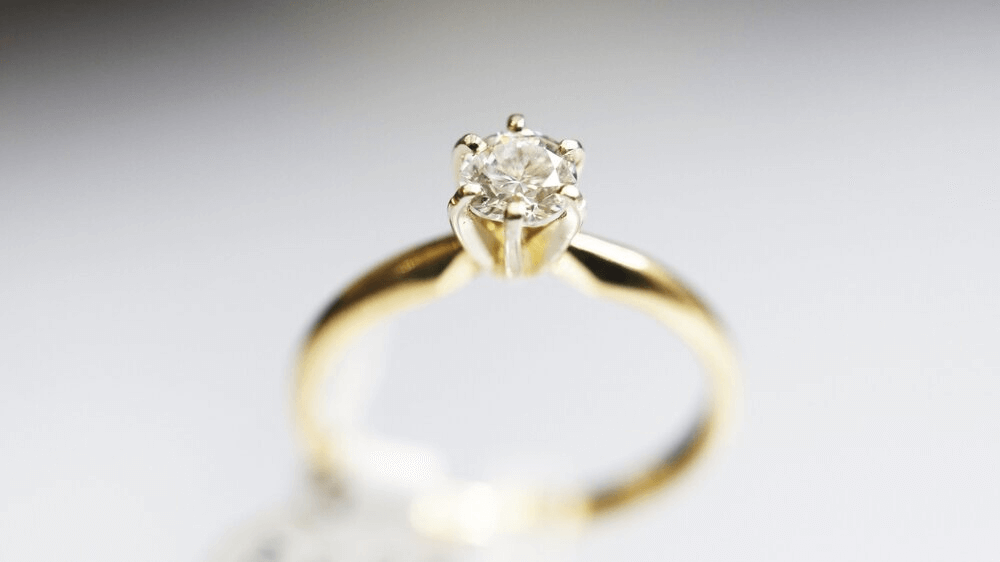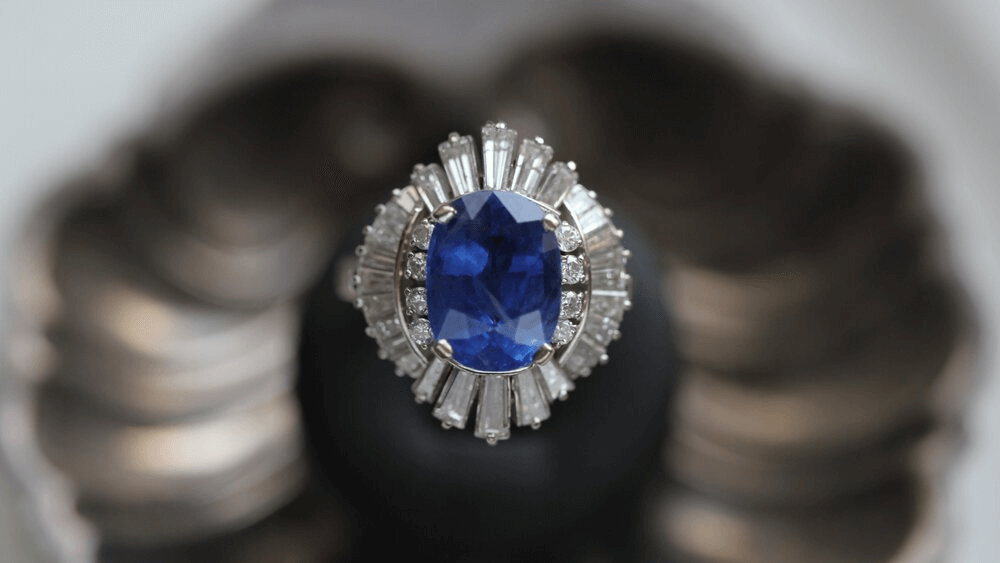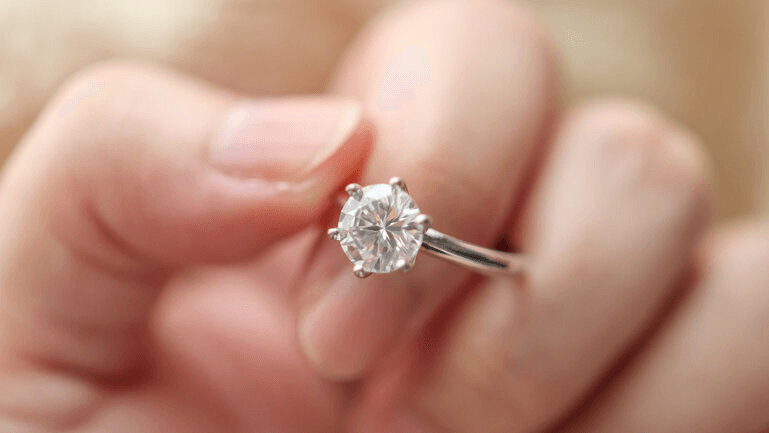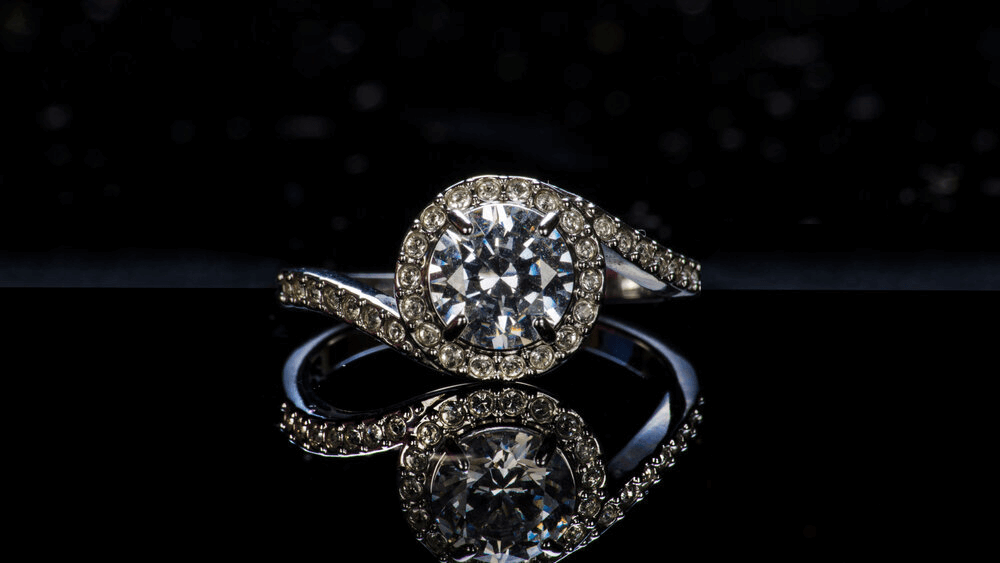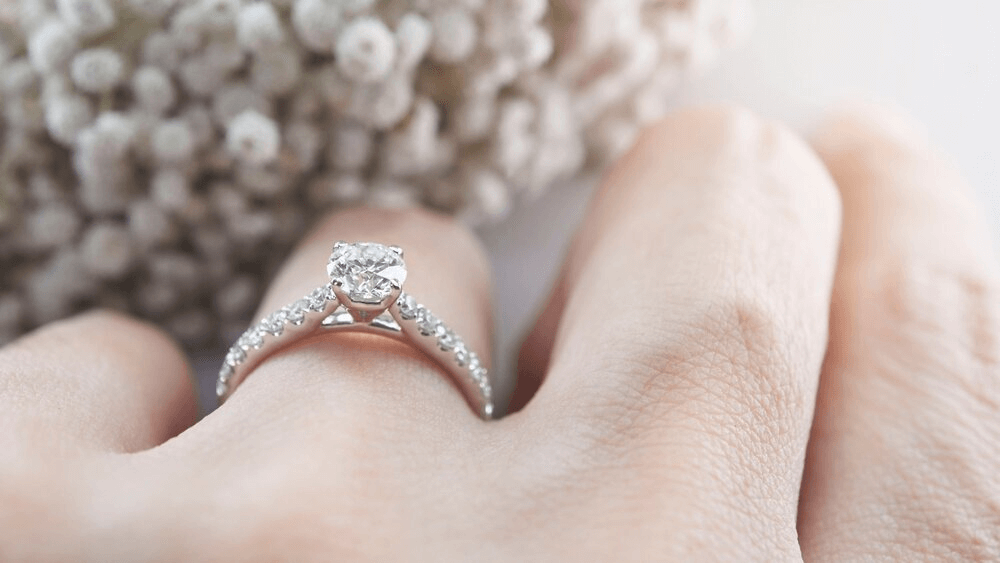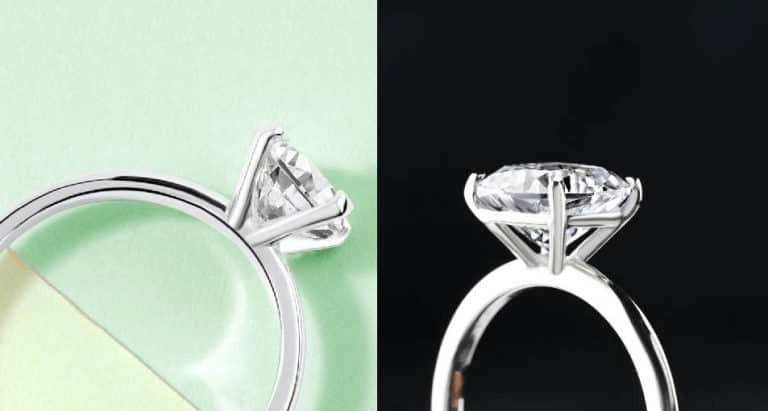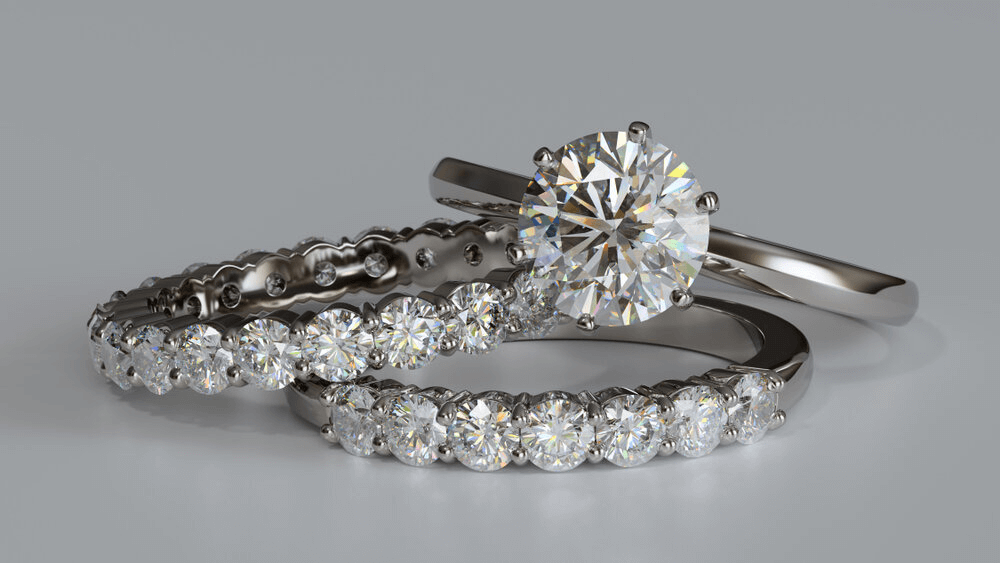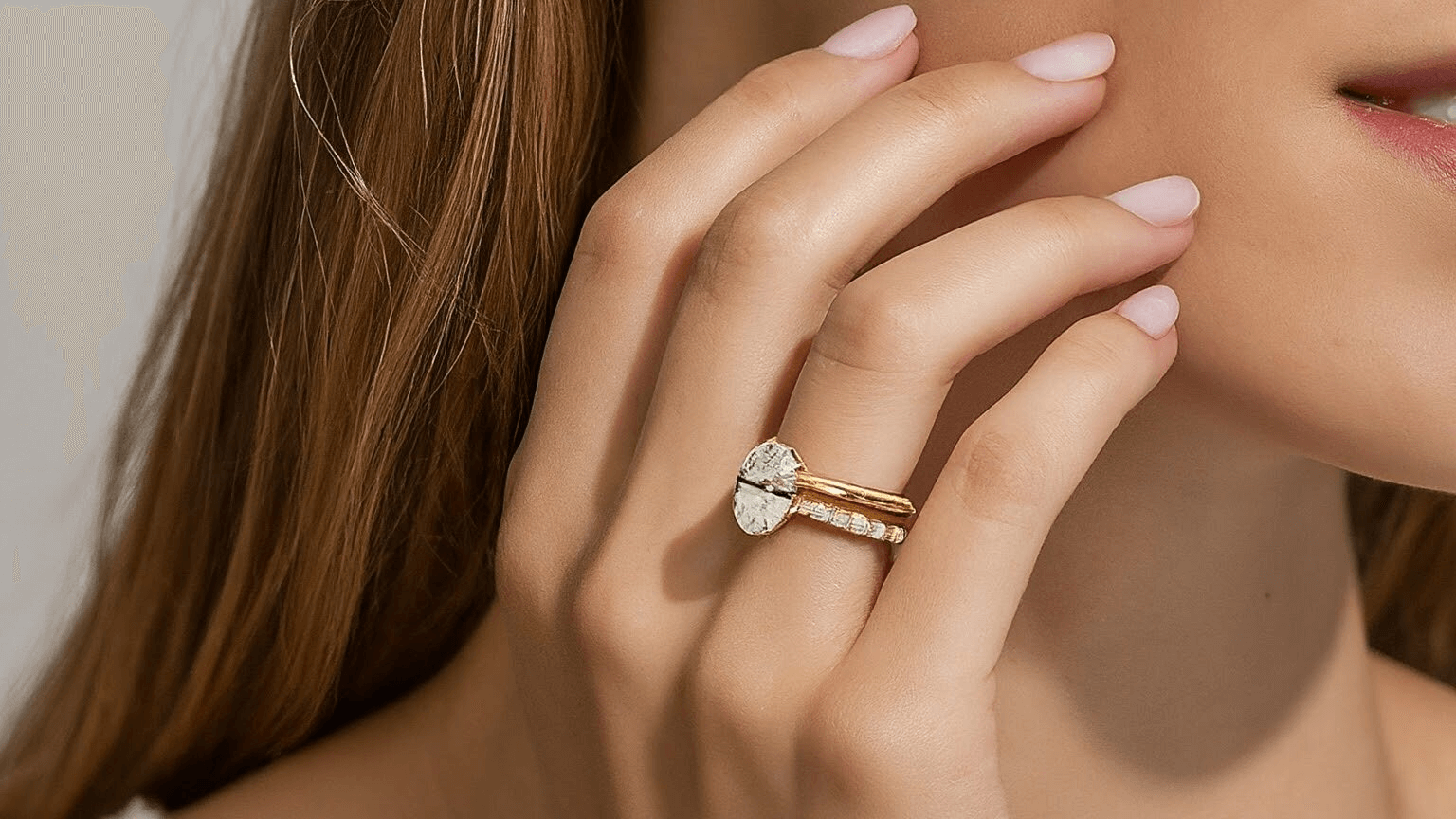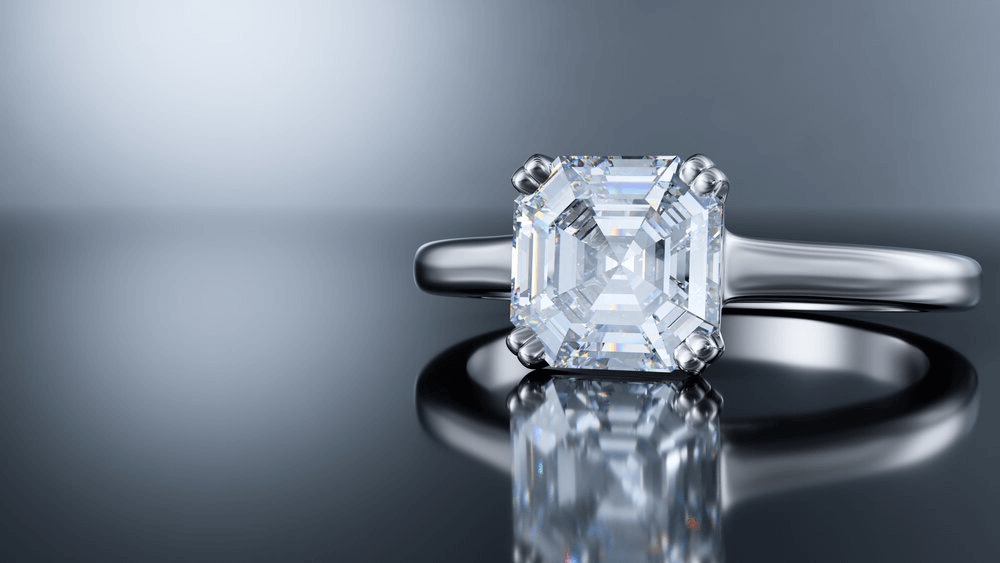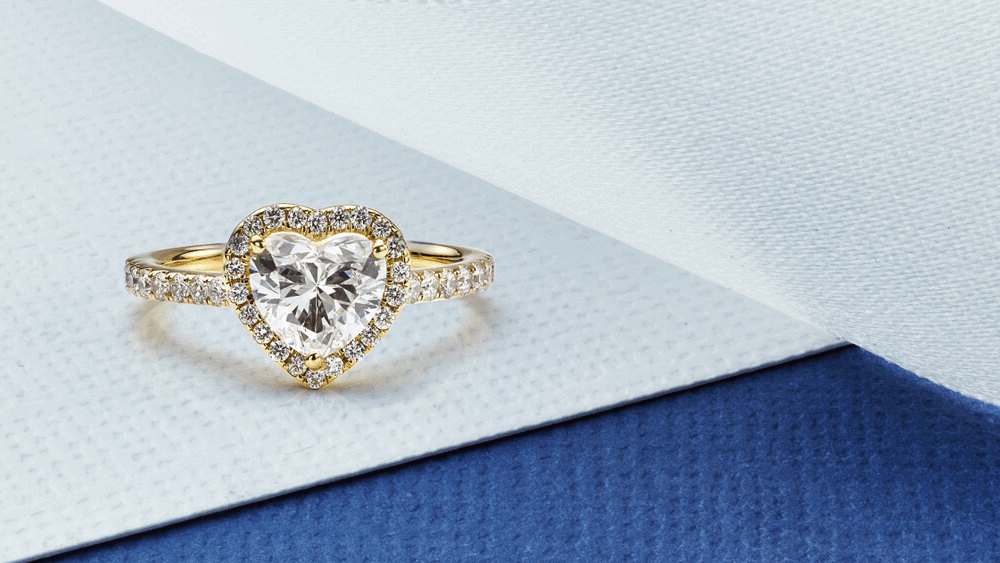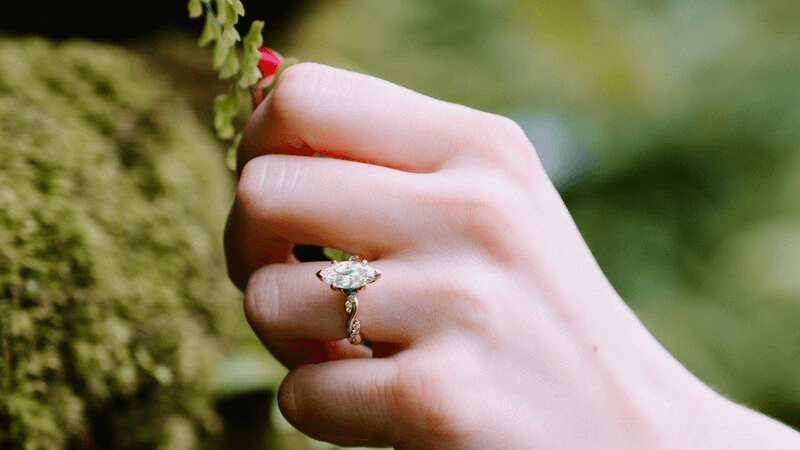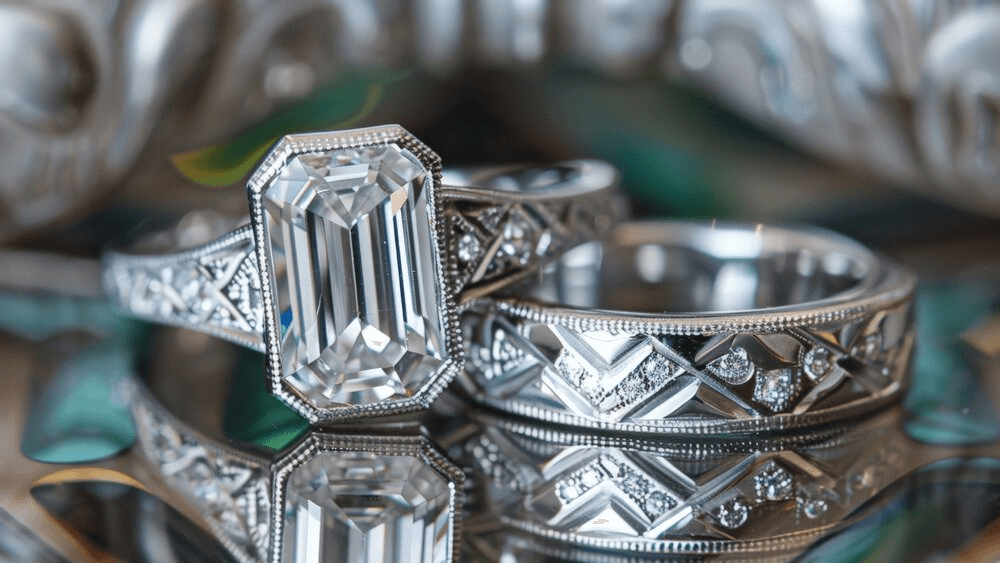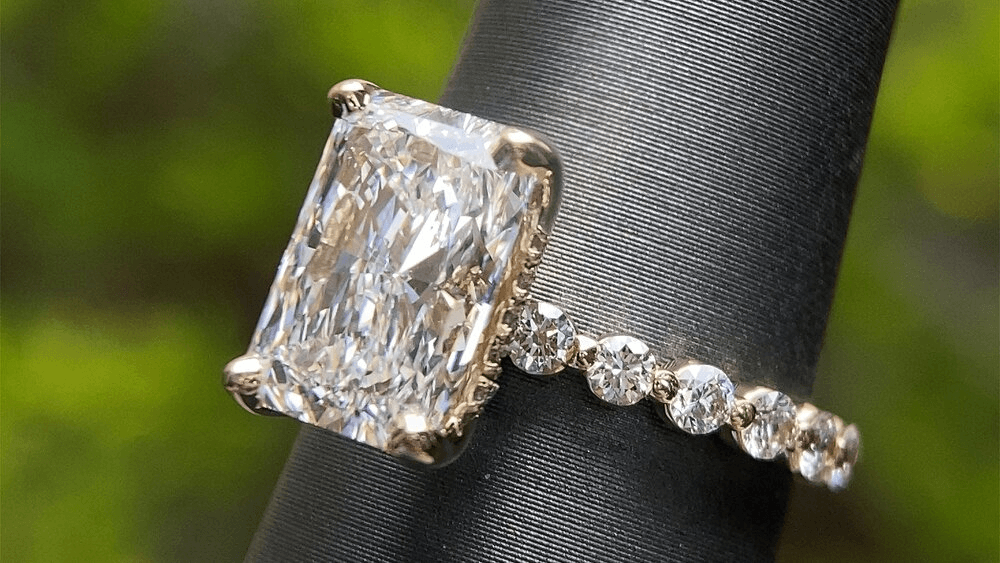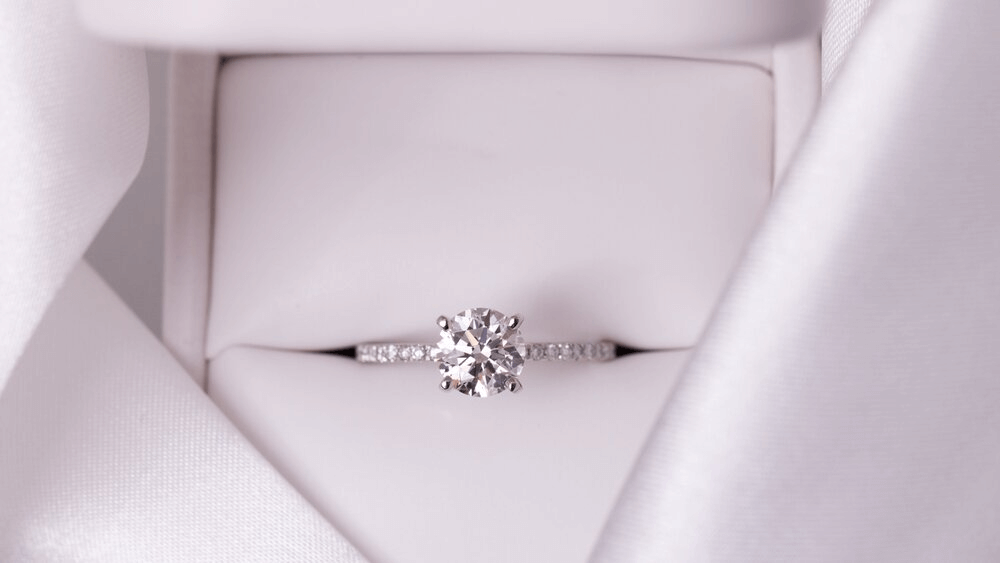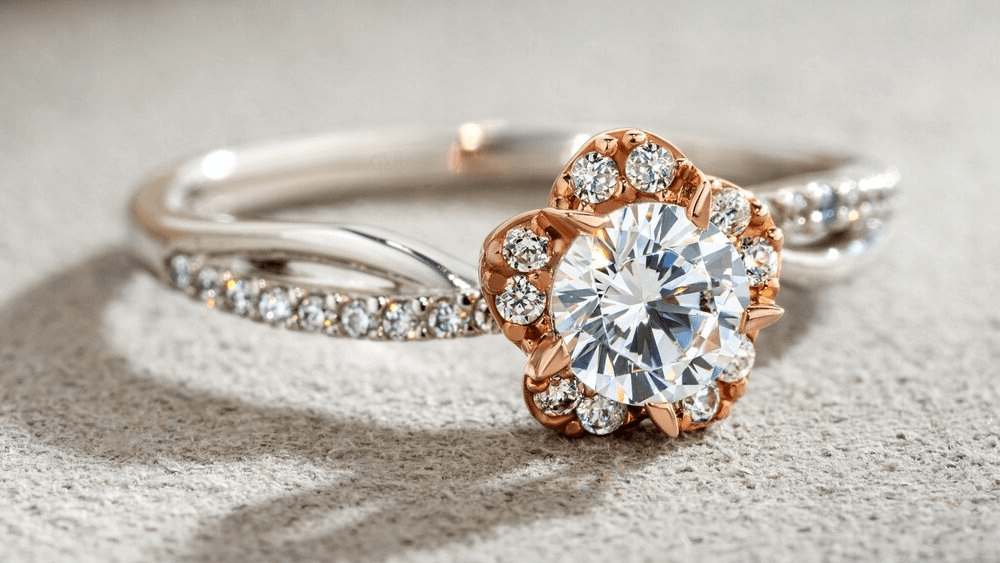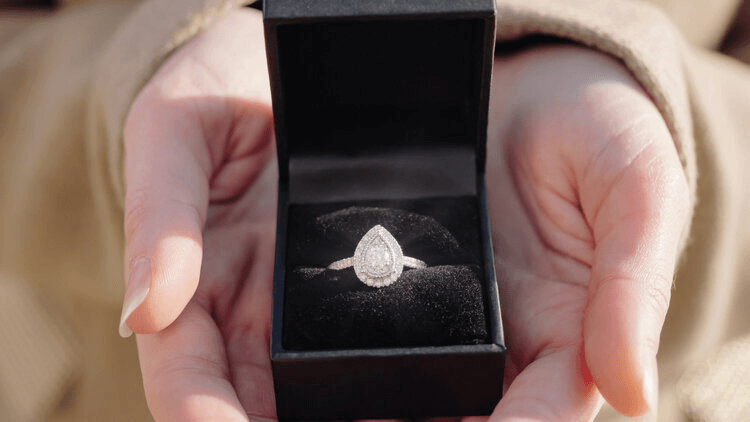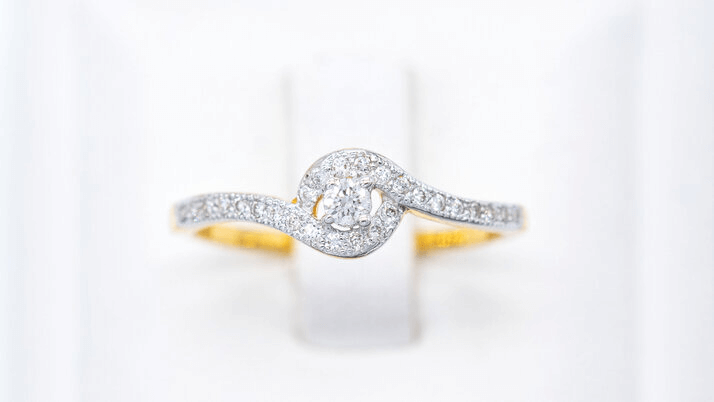The Majestic Charm of Milgrain in Engagement Rings

By Gary A.

Edited by Olivia H.
Published Mar 29, 2022
Edited on Dec 18, 2024
With its intricate detailing and timeless appeal, milgrain engagement rings add a touch of vintage elegance to your love story, making them the perfect choice for those seeking a unique, classic design.

- 5 Quick Tips for Buying a Diamond Engagement Ring with Milgrain
- Introduction to Milgrain Engagement Rings
- What is Milgrain?
- Milgrain: Vintage or Contemporary?
- Practical Considerations: Milgrain Durability
- Designing Your Unique Milgrain Engagement Ring
- Our Expert Take
- 7 FAQs
Before we dive deeper into the specifics, here are some practical tips to help guide your decision-making process:
5 Quick Tips for Buying a Diamond Engagement Ring with Milgrain
Examine the Milgrain Detailing Look closely at the milgrain edging. It should be evenly applied, with consistent bead sizes for a refined look.
- Tip 1:Consider the Metal Type: Choose a metal that complements the milgrain. Platinum and white gold enhance its visibility, while yellow or rose gold offers a vintage feel.
- Tip 2:Assess the Ring’s Profile: Pay attention to how the milgrain interacts with the ring’s profile. It should enhance the ring’s shape without overpowering it.
- Tip 3:Check the Ring’s Comfort: Ensure the ring is comfortable to wear. Milgrain should not irritate or catch on clothing.
- Tip 4:Look at the Overall Design: The milgrain should integrate seamlessly with the ring’s design, adding to its beauty without dominating the overall aesthetic.
- Tip 5:Inspect Craftsmanship Quality: Good craftsmanship is crucial. The milgrain and the rest of the ring should exhibit high-quality work, with no loose stones or uneven surfaces.
Now that you’ve got these practical tips, use Jeweler AI below to find the perfect engagement ring that suits your style and budget:
Introduction to Milgrain Engagement Rings
At WillYou, we’re definitely suckers for the classic solitaire engagement ring design. We also fall pretty easily for the contemporary and ultra-minimalistic skinny band or floating engagement rings. But, even so, there’s something about the more traditional, old-fashioned design staples that can get our hearts fluttering, too.
We’re not alone. Vintage engagement ring designs are some of the most popular out there. Sure, every year brings with it new trends, new ‘fan favorites’ and new leaders of the pack, but the vintage styles never seem to go out of popularity, no matter how much time passes.
Milgrain, like filigree, is one of the most popular metalwork techniques for creating an antique vibe on the ring’s shank.
Here’s what you need to know.
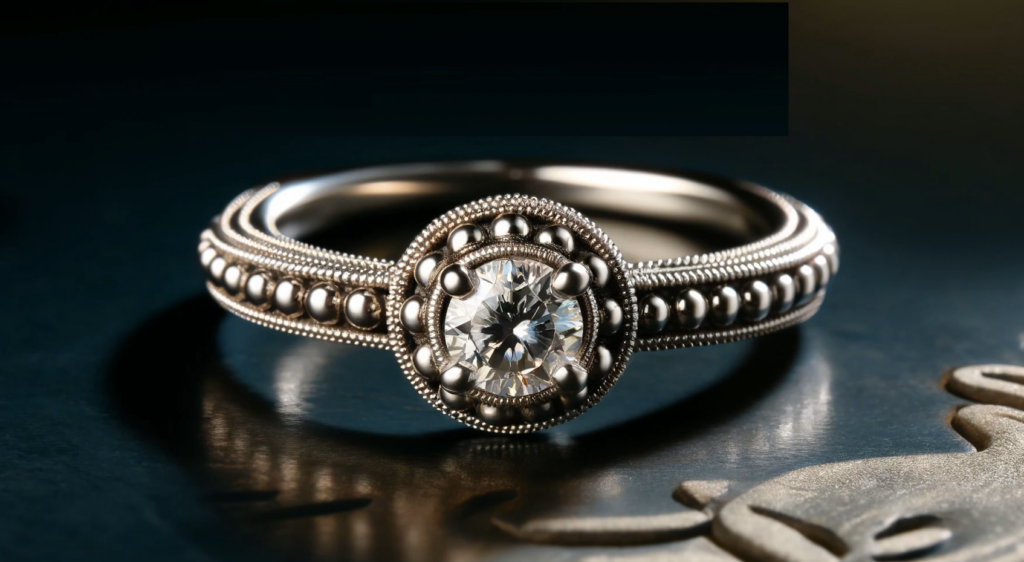
What is Milgrain?
Milgrain is characterized by rows or clusters of tiny metal beads. They’re often located along the outer edges of a shank or combined with other features (like filigree) to create intricate designs.
The word ‘Milgrain’ comes from the French mille grains, which means a thousand grains. The technique has been used in jewelry making around the world for hundreds of years, and across so many different eras that it’s impossible to tie it to just one.
You’ll find plenty of examples of milgrain in Edwardian and Victorian jewelry, but also as a key part of styles popularized a lot later, like the Art Deco movement of the 1920s.
It is great for adding detail to a ring without overwhelming your diamond with accent stones. While pavé, for instance, is a popular technique for decorating the shanks of engagement rings, some people prefer to keep things a little simpler, and milgrain is the perfect option for them.
The Evolution of Milgrain in Modern Jewelry
Archaeological records show the Milgrain technique being used in the 8th century BCE.
The technique has been found in artefacts from Southeast Asia, as well as China and India, from that time onwards. It was particularly popular during the Romantic Movement of the 1800s when intricate detailing in art, jewelry, clothing and interior design became all the rage.
Since then, the technique has retained a vintage feel to it, although modern jewelers are constantly pioneering new reinventions of the style.
Milgrain vs Filigree
While milgrain simply refers to metal beading, filigree can take on many forms. It is essentially metal lacework, used to create intricate and, often, botanically-inspired shapes and patterns on a ring or other piece of jewelry.
Since both techniques are commonly associated with vintage ring designs, they’re often used together, which is why shoppers can easily feel confused between the two. Combining milgrain with filigree is the best way to sneak extra detailing into every aspect of the ring, ensuring it’s beautiful and intriguing from all angles.
Milgrain: Vintage or Contemporary?
While it tends to carry a vintage vibe, milgrain is never considered out of style, simply because it’s such a versatile staple in jewelry making.
Sure, there will always be times when popular opinion leans toward simplistic, streamlined, minimalistic ring designs – plain gold or platinum bands with no unnecessary detailing – but milgrain is not as ornate and ‘obvious’ a design choice as, say, filigree.
When it’s added into a design thoughtfully, it can be perfect for capturing that traditional, age-old-romance vibe that so many people want to find in their ring.
Keep in mind that there are many different ways to use milgrain. It can be used to create ring designs inspired by vintage styles, or used to add a final touch to the edge of a plain band. One of the less-popular uses for milgrain is to ‘fill in the gaps’ between pavé diamonds in lower cost jewelry. There’s nothing wrong with this, and it can be done tastefully, but it’s generally regarded as a technique for ‘tricking the eye’, rather than creating beautiful pieces.
Practical Considerations: Milgrain Durability
When created by a skilled jeweler milgrain is very durable, although, like most things, it won’t last forever.
Remember that milgrain is created using the same metal that the rest of the ring is made of. For bridal jewelry, this usually means gold – typically either 14K or 18K – or platinum. All of these options are very durable, even for everyday wear, so you don’t need to worry about your milgrain wearing away in a matter of months.
Material Matters: Choosing the Right Metal for Milgrain
As we mentioned in our full guide to gold jewelry, a 10K or 14K gold will offer the most durable option for any features on your ring, like milgrain. 18K gold is durable enough for bridal jewelry, but it may wear out a little faster than the other two options.
Besides, if it ever comes to it, a skilled jeweler can patch up milgrain that’s been subjected to too much wear and tear…

Designing Your Unique Milgrain Engagement Ring
Milgrain can be added to a later date. This is a good option to keep up your sleeve if you think your partner would like a ring featuring this technique, but aren’t totally sure.
As we mentioned above, it’s also a great option if you’re hoping to restore an old, heirloom piece to its original glory. While it takes many, many, many years, milgrain can wear away. Some people love how this looks since it proves the ring’s age and how much it has been worn over the years, but it’s worth keeping in the back of your mind in case restoration is on the cards.
Our Expert Take
There’s a lot to love about milgrain, and there’s no denying it’s a mainstay of jewelry design, but its long-standing association with vintage ring designs means it’s not the right choice for everyone.
As we mentioned at the very beginning of this article, rings featuring a milgrain design are pretty much located on the opposite end of the scale to the simple solitaires and minimalistic designs popular right now.
While, at the moment, ring trends tend to center on the more minimalistic designs, milgrain is simple and subtle enough that it won’t just go in and out of style like some features. Go with what works for your vision, and use milgrain as the perfect finishing touch for a variety of designs.
7 FAQs
- Q: What is Milgrain in Jewelry?
A: Milgrain refers to the tiny bead-like details often added to the edges of jewelry, giving it a vintage or textured look. - Q: Does Milgrain Affect Ring Durability?
A: Milgrain does not significantly impact durability but requires careful handling to maintain its intricate design. - Q: Can Milgrain be Added to an Existing Ring?
A: Yes, a skilled jeweler can add milgrain detailing to existing rings, enhancing their appearance. - Q: What Metals Work Best with Milgrain?
A: Platinum and white gold are excellent for highlighting milgrain details, though yellow and rose gold can also be used for a more vintage look. - Q: Is Milgrain Suitable for Daily Wear?
A: Yes, milgrain rings are suitable for daily wear, but it’s advisable to take them off during heavy physical activities. - Q: How Do I Care for a Milgrain Engagement Ring?
A: Regular cleaning and avoiding harsh chemicals will keep a milgrain engagement ring in good condition. A jeweler can provide specific care instructions based on the metal and design. - Q: Are Milgrain Rings More Expensive?
A: The cost can be higher due to the additional craftsmanship required for milgrain detailing, but it varies depending on the overall design and materials used.
Discover your perfect milgrain ring with Jeweler AI – elegance redefined.
FOLLOW-UP GUIDE SERIES





